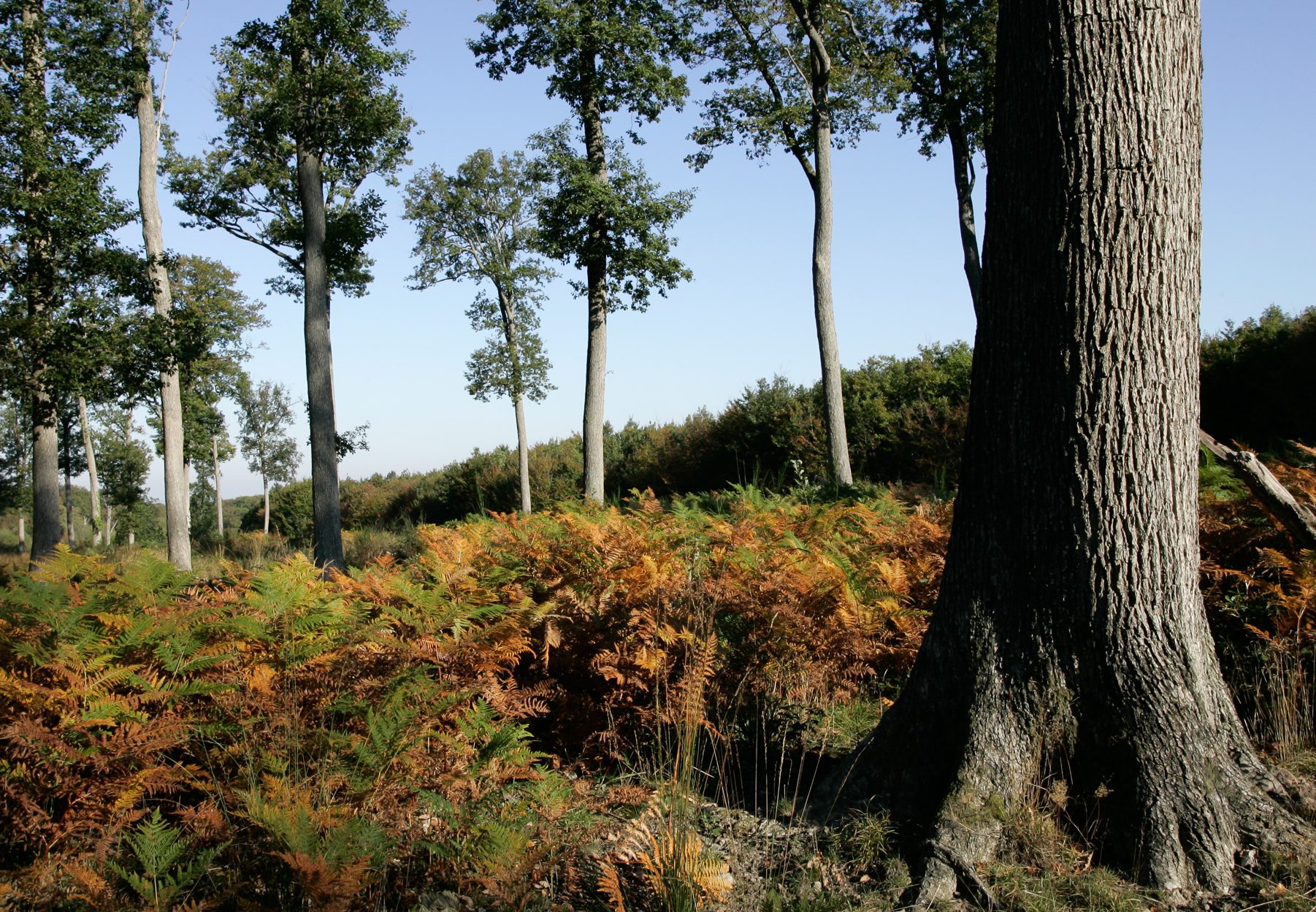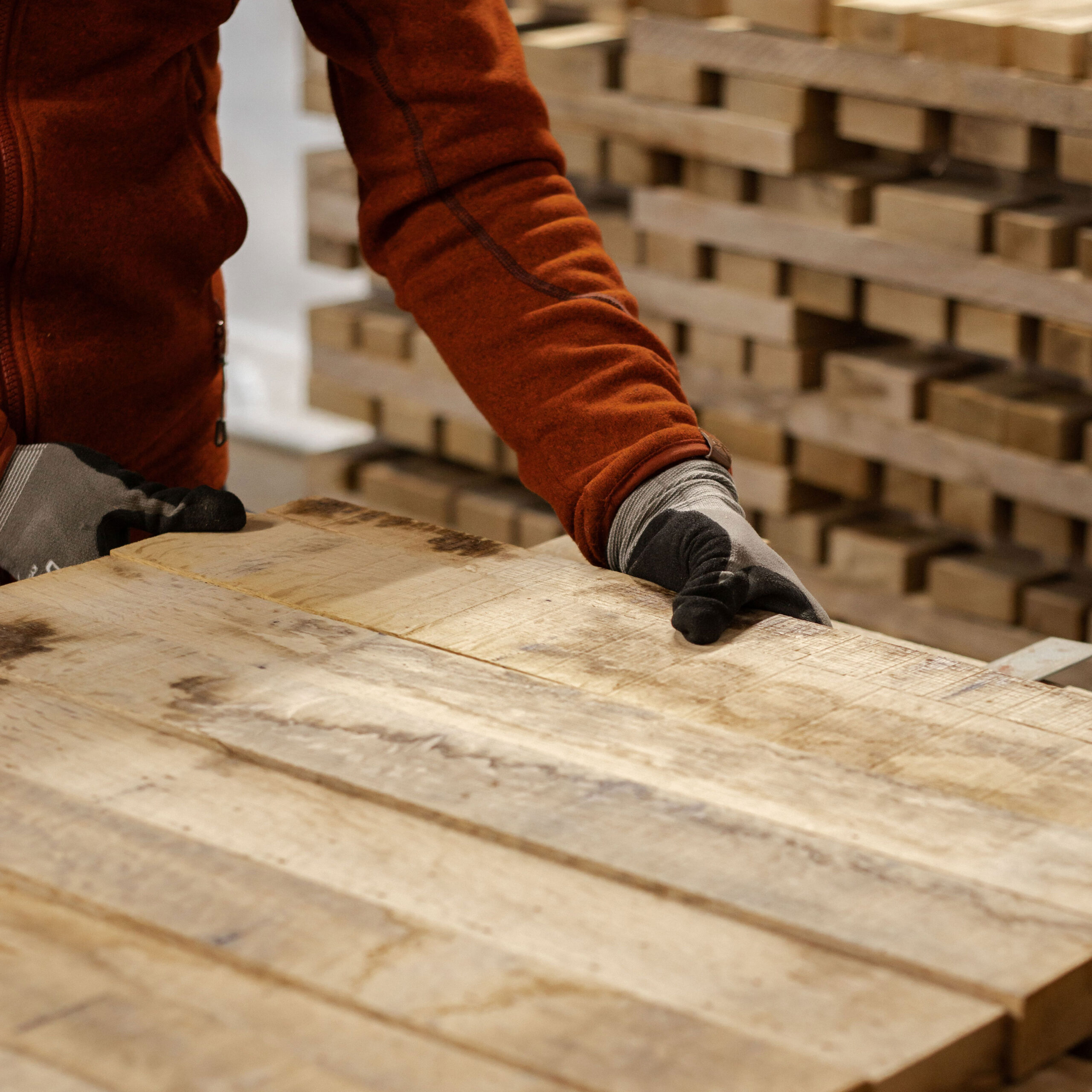WHAT IS THE LOGGING PROFESSION ?
We are mainly buyers of quality standing timber; therefore the logger must follow the logging scheme imposed by the ONF (French National Forests Office). Traditionally, we use the forests during the winter, the period of vegetative rest, so that the logs are free of sap and to allow them to be stored for a longer time. Unfortunately, we have less and less harsh winters – this limits us in cultivation. The soils are too soft in the spring and we have trouble going out to cut logs that have been cut in the winter. The ONF is very careful to respect the soil and to ensure that vehicles do not destroy the land. The solution is to anticipate the cutting of certain lots around September, which are in regions where we know that winter will be less severe. For the others, we postpone the collection of logs until the soil is sufficiently dry.
WHAT ARE THE CHALLENGES FOR THE LOGGER ?
We are dependent on the ONF, which owns more than 25% of the forest area, 95% of which is the quality material that the cooperage needs. From there, we have to accept and adapt to the ONF’s sales decisions. We are fervent supporters of leaving the trees in the ground because this allows us to guarantee traceability to our customers: the date and conditions for felling the tree. The challenge for us is to make these trades attractive today because it is more and more difficult to find this craftsmanship, whether it be in lumberjacks or wood buyers … We train young people who are passionate about wood, but it is very complicated to find competent people.
HOW LONG DOES IT TAKE BETWEEN FELLING THE TREE AND RECEIVING IT AT THE STAVE MILLS ?
The log must be brought back as quickly as possible because the storage time is very limited, especially for trees over 150 years old. The wood is no longer in gestation, it is necessary to remove the aubious part, the living part, as soon as possible. Logs are treated only with water as they are intended for food use. To ensure the most optimal logistics, transport is provided by our own trucks.
WHAT ARE THE STRENGTHS OF CANADELL ?
Today, 90% of the barrels are produced by companies that are loggers, stave makers and coopers. The concentration of players in the sector is a real trend to allow the existence of all trades. If we go beyond this scheme, it is impossible to have access to a very quality oak. Canadell combines all of these trades to meet the demand for oak barrels. The advantages are to guarantee traceability, to have financial guarantees for the ONF and to optimize the margins to maintain the activity. Concentration is virtuous in our sector because each player seeks to always produce the best barrel with the best qualities for its use. This is positive.
KNOW-HOW AND EXPERTISE ARE KEY TO BUYING THE WOOD SOLD BY THE ONF. WHAT ARE THE CRITERIA THAT ALLOW DECISION-MAKING AND ESTIMATION AT THE RIGHT PRICE ?
The estimate is carried out batch by batch, foot by foot in the forest … On 150 to 200 feet bought per year, we will estimate about more than 600. At the time of the sale, we bid according to market prices to have the lots that we have targeted. We never know with which lot we are going to exit the sale. The raw material of French oak is very rare and in great demand. Although the number of players has been divided by 3 or even 4 in 10 years, it is a very competitive sector. Whereas the ONF posts few lots up for sale like in recent years, it is very complicated to buy timber in volume. It’s like the Hospices de Beaune wine auction, you don’t know if you will be leaving with the piece (barrel) you liked and at what price. However, the sale of wines in Beaune takes place every year, while the sale of a lot by the ONF is one-off.
HOW DO YOU BECOME A GOOD STAVE MAKER ?
My grandfather started making staves in the 1950s. However, it is a confidential and niche trade because there are no training or diploma centers, unlike cooperage. The job has to be learned in the field and we train people here. You have to be skillful, valiant and love the material. The first transformation of wood is always more thankless than the second transformation into cooperage. This is why it is difficult to attract young people to become stave makers or sawyers. The profession has evolved in certain debit methods, the automation of certain transformations, but the profession is the same as it was 50 years ago. The oak grew in slow and specific conditions; only a human expert eye is able to follow its lines to transform it. For example, the sorting of staves is exclusively carried out by hand, while for winegrowers, technology with an optical sorting machine at harvest allows advances that we have not yet developed in our trades. Stave making, along with cooperage, are luxury industries: we work French oak – a noble material, associated with an ancestral human know-how. When we offer derived materials such as staves or chips, we are addressing other players where the financial impact of the use of wood should be less. The calculation is quick. For chips, it takes 2 grams per 1 liter while a barrel is about 228 liters. The markets and the customers are therefore very different.
CAN YOU ILLUSTRATE THE PRICE PRESSURE ON THE RAW MATERIAL ?
The price of French oak has increased by about 40% in 3 years due to the weak sales of the volumes available by the ONF. This shortfall can only be compensated by an increase in prices. Just as we can see on the Grands Crus of Burgundy for example, where production does not meet global demand. The tree will have taken 150 to 200 years to grow, and then we have a period of 5 years between felling with the technical steps of stave-making, and immobilization for air-drying, before being shaped by the cooper. This resource is fragile and limited. Our sourcing depends on the goodwill of the ONF and the available lots, as well as on our production capacity, which is also limited by the expert human resources that we employ and the material. We must remember that in France, we do not pick up our phones to buy 1000 m3 of oak. There is no such thing! In the Center region, there are four major sales, two in the fall and two in June. In the Paris region, there are only two sales per year. In total in France, there are around a dozen sales, whereas before there were around thirty. The concentration of volumes and players are two factors that encourage pressure on prices.
WHERE DO YOU BUY YOUR TREES ?
Canadell’s particularity is that it has been the first buyer of oak at the ONF for several years because of our ability to source wood in all French regions. We have two buyers in the Vosges, one in the Center, one in the Paris region and two locally in the South West. We also buy some wood in Germany. They are high quality woods due to the harsher climates and an even more protectionist method of forestry than in France because they operate at diameter, particularly in the prestigious forest of Sarre-Palatinate. We buy little because we are not present on the spot but the little that we have made is one of the most beautiful woods that we can find.
CANADELL IN A FEW FIGURES :
- 45,000 m3 of oak per year, the main processing of which is intended for wine-making
- About 10 to 12,000 feet per year
- About 100 people
Interview conducted by Marie-Pierre Dardouillet @Cépagescommunication for Cadus – 2020






 This website uses cookies to enhance your web experience.
This website uses cookies to enhance your web experience.